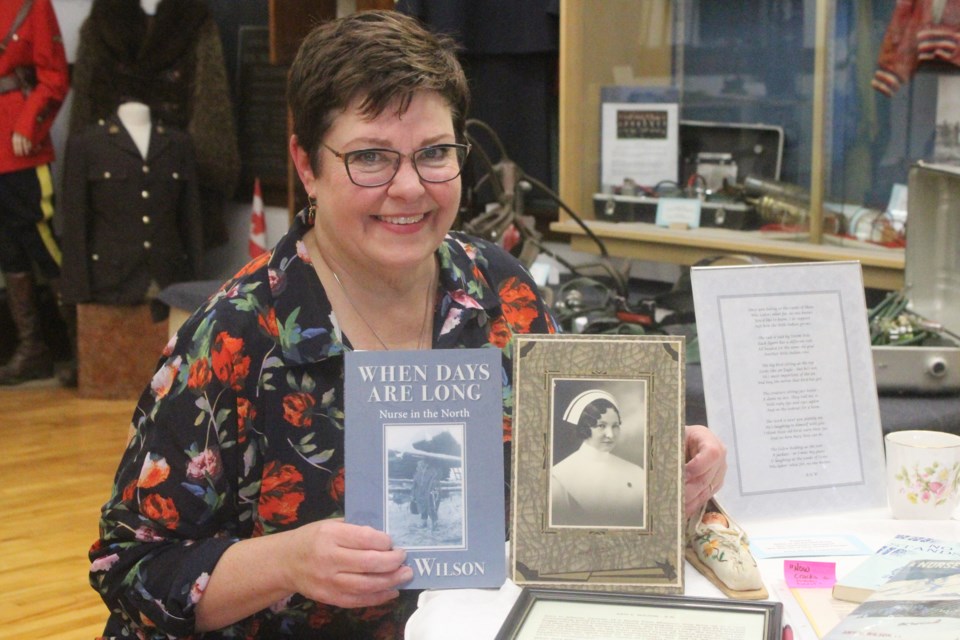DIDSBURY - The Didsbury Museum had a recent special guest presenter, Laurel Deedrick-Maynes, the grandniece of Amy Wilson, a former Didsbury resident who was a nurse in the Yukon and northern B.C. during the 1940s and 1950s.
Deedrick-Maynes talked about her famous great-aunt and her nursing adventures in the Yukon among the Indigenous people. She also sold copies of Wilson's biography When Days are Long.
About 20 people came out to hear the talk and snack on treats including fresh bannock and moose sausage.
"The Wilsons farmed here just north of town," said Deedrick-Maynes, who hails from Edmonton. "Her sister, Mona, was my grandmother."
Wilson became a nurse after training at Calgary General Hospital. She accepted a position as a field nurse in 1949 in northern Alberta and the Yukon Territory, where she would take care of 3,000 Indigenous people.
"She was called the Alaska Highway Nurse," said Deedrick-Maynes. "What that meant was that her district was the entire 200,000 square miles either side of the Alaska Highway. She was the only nurse looking after Indigenous people in that entire territory. She had many heartwarming and heartbreaking adventures."
Wilson ended up publishing her memoirs No Man Stands Alone (now known as When Days are Long: Nurse in the North) just before her death in 1965, said Deedrick-Maynes.
"It's all about making a heart connection with people," she said. "It's about celebrating people in joy, learning each other's customs, medicines, music. A real sharing. Walking side by side."
Deedrick-Maynes said that her great-aunt would have to travel to all these distant locales by any means necessary.
"They weren't coming to her," she said. "She was going by dog team or horseback or snowshoe or bush plane. It was usually well off the beaten track. She was delivering babies, performing surgery, pulling teeth, whatever was needed. She was the health-care provider."
Deedrick-Maynes recalls one story from the book where there was a major diphtheria outbreak.
"She was going by circuitous route to various hospitals, so Fort St. John, Dawson Creek, to get the anti-toxin that would save lives," she said. "A call had come in that there was this bad sickness. An Indigenous fellow had snowshoed 60 miles to a cabin with a ham operator. That's when she got the call."
Wilson later worked in Merritt and Williams Lake in northern B.C. where she became more of an advocate for Indigenous rights, said Deedrick-Maynes.



